This article was co-authored by Marsha Durkin, RN. Marsha Durkin is a Registered Nurse and Laboratory Information Specialist for Mercy Hospital and Medical Center in Illinois. She received her Associates Degree in Nursing from Olney Central College in 1987.
There are 13 references cited in this article, which can be found at the bottom of the page.
This article has been viewed 52,109 times.
Dermabond is an FDA-approved surgical glue used to close small wounds, lacerations, and incisions. Medical professionals apply it in place of smaller sutures (stitches), after cleaning the wound. It's an efficient method for closing wounds, as it typically bonds in under 3 minutes and minimizes discomfort. If you're applying it, just be careful that you don't spill excess glue, as it is very strong and it sets quickly.
Things You Should Know
- Dermabond is a tissue adhesive for wounds, and you can use it instead of sutures so long as the sutures you’d use would be 5-0 or smaller.
- You must thoroughly clean, irrigate, and sterilize the wound before applying Dermabond, and the patient may require local anesthetic to tolerate the procedure.
- It’s generally not advised to use Dermabond if the wound is irregularly-shaped or requires special aftercare (i.e. burns, ulcers, and animal bites).
- To apply Dermabond, crush the ampoule in the clear part of the tube to activate it, hold the wound closed (you may need additional help and some forceps), and apply at least 3 smooth, even layers of Dermabond over the wound.
Steps
Taking Precautions while Using Dermabond
-
1Be careful not to get Dermabond in hair. Dermabond will adhere hair to itself or to the skin. In fact, you may not want to use Dermabond on the scalp at all, as it can be difficult to avoid getting it in the surrounding hair.[1]
- Some medical professionals suggest that you can use Dermabond on the scalp. However, if you do, you must be very careful not to let it run through into the rest of the hair.[2]
-
2Use an eye shield when applying Dermabond near the eyes. Apply an ophthalmic cream around the eye. This forms a barrier that makes the Dermabond go around it instead of in it. Also, tilting the patient's head down away from the body and to the side can help prevent the glue from going into their eye.[3]
- For instance, if the cut is near the outside of the right eye, tilt the patient's head that direction, so the glue flows away from the eye.
- Another option is to soak a piece of gauze in saline and place it between the eye and the wound.
Advertisement -
3Wash your hands and put on sterile gloves. You should still follow standard cleaning procedures by thoroughly washing your hands before applying Dermabond. After washing your hands, put on sterile gloves for the procedure.
- You can introduce bacteria to the wound if you're not careful, as well as be exposed to contaminants from the wound.
- Keep a box of gloves nearby in case you need to switch them out while you're using the glue.
- You may also want to consider wearing safety glasses to prevent biohazardous materials or any of the glue from getting in your eyes while you open and apply the product.
Preparing for Dermabond Use
-
1Use Dermabond in place of 5-0, 6-0, and 7-0 sutures. Dermabond is appropriate for small cuts that would normally require 5-0 sutures. You can also use it in place of smaller sutures.[4]
- Typically, 5-0 sutures are used on limb wounds. Sutures get smaller in size the larger the USP size. For instance, a 4-0 suture is bigger than a 5-0 suture. The 6-0 and 7-0 sutures are smaller than a 5-0 suture, and they are used for smaller cuts on the hands, face, and nail beds, for instance.
-
2Avoid using Dermabond with more complicated wounds. Wounds like animal bites, contaminated wounds, ulcers, and punctures have more bacteria in them and shouldn't be closed up. Dermabond isn't a good choice for these types of wounds.[5]
- Do not use Dermabond on a wound that is infected or contaminated, as it can make the problem worse.
-
3
-
4Irrigate the wound thoroughly. For Dermabond to heal effectively, you must dilute the bacteria in the wound first.[8] Flush the wound with a 0.9% saline solution to help remove the bacteria.[9]
- Use a 10 cc or 20 cc sterile syringe with a splash cover to apply the saline to the wound.
- If needed, you can remove debris at this point with a fine (small) pair of sterilized forceps.[10]
-
5Wait until the wound stops bleeding. You cannot apply Dermabond while the wound is still bleeding freely. Apply pressure to the wound with a sterile gauze until it begins to clot and the wound is dry.[11]
-
6Pat the area dry. Once the wound stops bleeding, wipe up any excess blood. Pat it dry with sterile gauze. Try not to apply Dermabond to a wet wound, as it won't seal as well.
- Moisture on the wound can also stop up the applicator, making it more difficult to apply.
Using the Glue
-
1Crush the ampoule in the clear part of the tube. Squeeze the clear section of the applicator tube. It has a small ampoule inside that releases part of the glue inside the applicator, similar to a 2-part epoxy.
- While you're squeezing, do not point the glue at the patient. Keep it away from the patient and point it at the floor.
- After squeezing, release the pressure.
-
2Squeeze the clear part of the tube again gently. Once you release the tube from breaking the ampoule, you need to squeeze the same area again. However, use gentle pressure this time, as you don't want to squeeze the ampoule a second time. This action pushes the adhesive into the internal filter.
- If you crush the tube too hard, you can push pieces of glass through the sides, injuring yourself.
- Shake the tube gently to encourage the glue to flow downwards.
-
3Grasp each end of the wound with Adson forceps. You will need another person to help you. Each person should hold one end of the wound with forceps. Grasp the skin about 2 millimetres (0.079 in) out from the ends of the wound. Pull outwards on the corners of the wound so that the edges of the cut are tight against each other.[12]
- Adson forceps are small forceps often used to suture the skin. Use ones with teeth, as they provide more grip.
-
4Apply a single layer of Dermabond over the wound. Run the applicator over the length of the wound, applying glue in a single, steady layer. The applicator should be touching the skin. Hold the skin together for at least 180 seconds to ensure the glue begins to dry. Apply the glue only on top of the wound, not in the wound.[13]
- Wipe up any excess glue immediately using sterile gauze.
- Be careful when applying the glue, as it can stick almost anything to the skin. For instance, it will adhere your gloves or the forceps to the skin if you're not careful.
-
5Add a second layer in 30 seconds for Dermabond Adhesive. If you are going to add a second layer, add it after the first layer has dried for 30 seconds. Run the applicator over the wound a second time.[14]
- There are 2 types of Dermabond, Dermabond Adhesive and Dermabond Advanced Adhesive. If you have the advanced formula, you should only apply 1 layer. When applying Dermabond Adhesive, thin layers are better because a thick layer can heat up, causing the patient discomfort.[15]
- You can also apply a third layer this way.
- Hold the skin in place for another 180 seconds.
-
6Wait for the glue to set if you want to apply a bandage. It's not necessary to apply a bandage after using Dermabond. However, it can be helpful with kids who might pick at the glue. Wait until the glue is completely set and not sticky to the touch before applying a bandage.
- The glue will be fully set in 95-3 minutes seconds for Dermabond Advanced or in 3 minutes for Dermabond Adhesive. It may take up to 5 minutes for the wound to not feel sticky.[16]
- If you are worried the wound might open again, you can apply surgical tape or a butterfly bandage over the wound once it dries completely.[17]
-
7Avoid using liquid or cream medications on the wound after application. If you apply an antibiotic cream or another type of medication after using Dermabond, it can make the glue weaker. It may even result in the glue coming apart.
- For this reason, it's important to make sure you thoroughly clean the wound before applying Dermabond since you can't apply an antibacterial cream afterwards.
-
8Use petroleum jelly or acetone if you need to remove excess Dermabond. If you end up getting Dermabond outside of the wound area, apply petroleum jelly or acetone to the area. These solvents will help loosen the glue, and then you can remove the glue from the skin.[18]
- Do not try to pull the skin apart.
- Do not apply acetone in the area immediately around the wound, as this could cause a burning sensation.
Warnings
- Always wipe up any excess glue immediately so you don't accidentally stick foreign objects to the patient.⧼thumbs_response⧽
References
- ↑ https://www.sciencedirect.com/topics/medicine-and-dentistry/cyanoacrylate
- ↑ https://www.aafp.org/afp/2000/0301/p1383.html
- ↑ https://www.ahcmedia.com/articles/66273-pediatric-corner-here-8217-s-how-to-avoid-problems-with-dermabond
- ↑ https://www.aafp.org/afp/2000/0301/p1383.html
- ↑ https://www.aafp.org/afp/2000/0301/p1383.html
- ↑ https://www.aafp.org/afp/2008/1015/p945.html
- ↑ https://www.mayoclinic.org/drugs-supplements/lidocaine-topical-application-route/proper-use/drg-20072776
- ↑ https://www.ahcmedia.com/articles/66273-pediatric-corner-here-8217-s-how-to-avoid-problems-with-dermabond
- ↑ http://kidshealthwa.com/guidelines/skin-glue-dermabond/
- ↑ https://meds.queensu.ca/central/assets/modules/basic_suturing/wound_antisepsis_and_sterile_technique.html
- ↑ https://www.sciencedirect.com/topics/medicine-and-dentistry/cyanoacrylate
- ↑ https://www.sciencedirect.com/topics/medicine-and-dentistry/cyanoacrylate
- ↑ http://kidshealthwa.com/guidelines/skin-glue-dermabond/
- ↑ http://kidshealthwa.com/guidelines/skin-glue-dermabond/
- ↑ https://hostedvl106.quosavl.com/qb/doc/felsu56agnpkp6nqtbqim31j3o
- ↑ https://hostedvl106.quosavl.com/qb/doc/felsu56agnpkp6nqtbqim31j3o
- ↑ https://insidefirstaid.com/personal/dermabond-advanced-surgical-glue-for-skin-and-tissue-adhesive
- ↑ https://hostedvl106.quosavl.com/qb/doc/felsu56agnpkp6nqtbqim31j3o
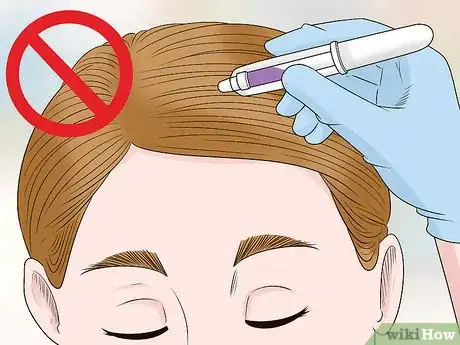
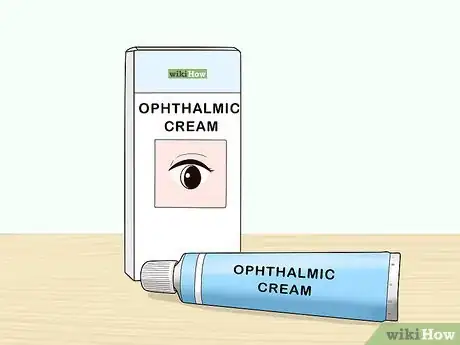
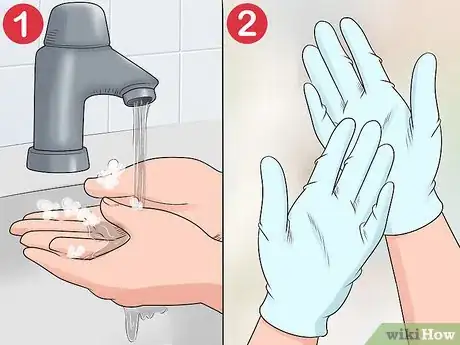
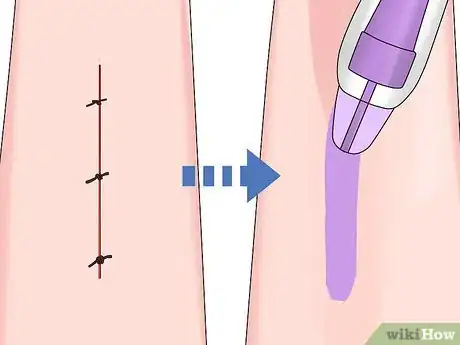
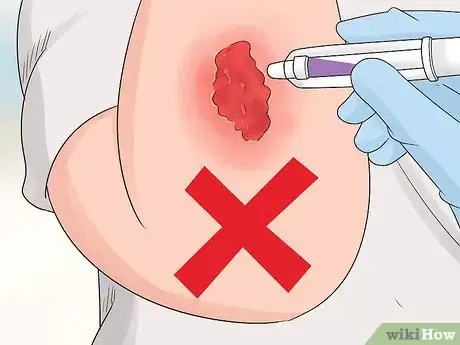


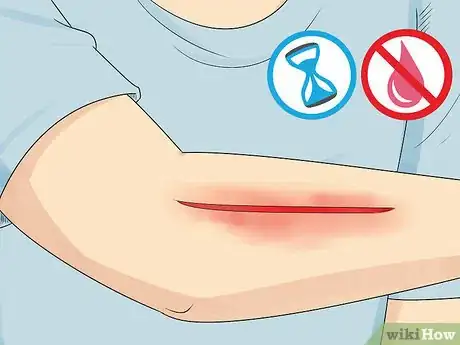


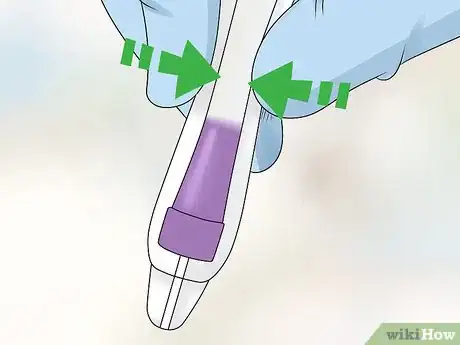

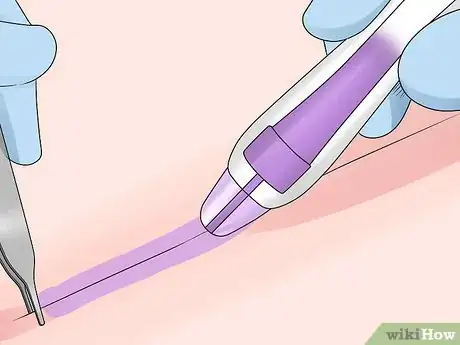



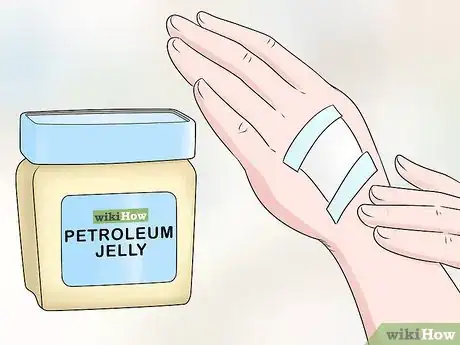






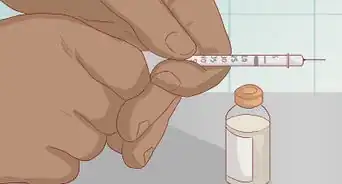



















































Medical Disclaimer
The content of this article is not intended to be a substitute for professional medical advice, examination, diagnosis, or treatment. You should always contact your doctor or other qualified healthcare professional before starting, changing, or stopping any kind of health treatment.
Read More...